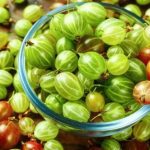 Animals
Animals  Animals
Animals  Weird Stuff
Weird Stuff 10 Weird Things People Used to Do at New Year’s
 Our World
Our World 10 Archaeological Discoveries of 2025 That Refined History
 Weird Stuff
Weird Stuff 10 Fascinating Facts You Might Not Know About Snow
 Miscellaneous
Miscellaneous Top 10 Things Crypto Was Supposed to Change & What Actually Did
 History
History 10 Huge Historical Events That Happened on Christmas Eve
 Music
Music 10 Surprising Origin Stories of Your Favorite Holiday Songs
 History
History 10 Less Than Jolly Events That Occurred on December 25
 Weird Stuff
Weird Stuff 10 Funny Ways That Researchers Overthink Christmas
 Politics
Politics 10 Political Scandals That Sent Crowds Into the Streets
 Animals
Animals 10 Species That Refused to Go Extinct
 Weird Stuff
Weird Stuff 10 Weird Things People Used to Do at New Year’s
 Our World
Our World 10 Archaeological Discoveries of 2025 That Refined History
Who's Behind Listverse?

Jamie Frater
Head Editor
Jamie founded Listverse due to an insatiable desire to share fascinating, obscure, and bizarre facts. He has been a guest speaker on numerous national radio and television stations and is a five time published author.
More About Us Weird Stuff
Weird Stuff 10 Fascinating Facts You Might Not Know About Snow
 Miscellaneous
Miscellaneous Top 10 Things Crypto Was Supposed to Change & What Actually Did
 History
History 10 Huge Historical Events That Happened on Christmas Eve
 Music
Music 10 Surprising Origin Stories of Your Favorite Holiday Songs
 History
History 10 Less Than Jolly Events That Occurred on December 25
 Weird Stuff
Weird Stuff 10 Funny Ways That Researchers Overthink Christmas
 Politics
Politics 10 Political Scandals That Sent Crowds Into the Streets
10 Totally Normal Foods That Were Once Considered Aphrodisiacs
People have been drawn to things that promise them youth, longevity, and fertility all throughout history. Many products on supermarket shelves promise the same things today. A key difference between modern times and the past is that science has given people a way to see whether something is truly effective or not. Before this, there was a lot more pseudoscience and snake oil being pushed as solutions to people’s insecurities.
For example, nearly every food has been linked to libido enhancement at some point in the past. Plenty still are today. Could everything that has ever been eaten really be an aphrodisiac? No evidence proves anything except alcohol enhances desire—but it can also diminish one’s libido. The rest are just regular foods, and some of them are pretty far from what might be considered “sexy.”
So here are ten totally normal foods that were historically thought to be aphrodisiacs and the tales of how they got their reputation.
Related: Top 10 Bizarre Ways Foods Were Discovered
10 Beans
Still a staple of many diets today, the humble bean comes in many varieties and has been cultivated for thousands of years. But centuries before they became Hannibal Lecter’s famous side dish, they were thought to be an aphrodisiac. They had this reputation in early modern England, roughly between the 16th and 18th centuries. During this time, there were four main ways that a food could come to be considered an aphrodisiac.
There were foods that felt hot or warmed the body, foods that were thought to be especially nourishing, and foods that fell under the “doctrine of signatures,” which is to say they looked like certain body parts. The last category was the deeply unsexy-sounding “windy meats.” These were foods that caused flatulence, like beans. It was thought that the same air that was expelled when people passed wind also inflated men in preparation for the bedroom. Beans and peas were prescribed to men having trouble in this department. [1]
9 Mustard
One food for which the aphrodisiac effect was thought to come from its heat was mustard. The sensation comes from the mustard plant’s natural defense mechanism, which releases compounds called isothiocyanates to irritate and poison pests that try to eat it. The eye-watering “bite” people feel when they eat mustard happens when these compounds come into contact with pain-stimulating protein in their mouth. The intensity is tempered by other ingredients, such as vinegar.
People have been enjoying this effect since ancient times. The Romans even grew mustard throughout Gaul—modern-day France—once they had conquered it. When monastic communities began to spring up across Europe, they took over its production. Well, at least some of them did. While many of these holy men refined and perfected the production of mustard, other monks believed it was an aphrodisiac. Not wishing to be tempted to stray from their chaste path, many of these monks banned themselves from eating or making the condiment.[2]
8 Potatoes
While monks were doing their best to avoid aphrodisiacs, those living less spiritual lives were ready to gobble them up. A reflection of this can be found in Shakespeare’s play The Merry Wives of Windsor. In the play, Shakespeare’s regular comic character, John Falstaff, is an unlucky wannabe Lothario. Although his intentions and actions are less than godly, when he meets the wives in the forest, he prays for something that at first seems like a very strange request. “Let the sky rain potatoes,” he says.
Despite the character’s love of food and drink, he does not mean this literally. What he is actually asking for is success and, more importantly, prowess with the ladies. The phrase would have made perfect sense to Shakespeare and his contemporaries because potatoes were widely believed to have aphrodisiac qualities in the 16th and 17th centuries. Falstaff would likely have been referring to sweet potatoes, which had been around a lot longer than the white ones that arrived later from America.[3]
7 Carrots
Plenty of people were told as children that carrots are good for their eyes or would help them see in the dark. However, the ancient Greeks and Romans would have heard that they were good for something very different indeed—but probably not when they were children. Carrots, like most vaguely phallic vegetables, were thought to be an aphrodisiac that loosened the inhibitions of people who ate enough of them. Before the medieval doctrine of the signatures, the shape of the veg was not a strict rule; the Romans also thought cucumbers cooled one’s desires.
But the effect of carrots was widely accepted in ancient times. Caligula, the notoriously lustful Roman emperor, believed it. He is reported to have once force-fed carrots to the Senate so that they would be overcome by their desires and disgrace themselves before him. Roman soldiers were also known to cook a carrot broth for females that they captured.[4]
6 Eggplant
Using this fruit—yes, fruit—as a visual euphemism is hardly a new idea, and it certainly did not start with smartphones. In fact, it is also not unique to Western cultures; its resemblance to the male organ can be found in Korean literature and Japanese haiku. Beliefs about its aphrodisiac effects have been found throughout history in Asia, Africa, and Europe. In 16th-century France, it was even known as “pomme d’amour” or “love apple.” But belief in its aphrodisiac effects was probably not based on its appearance alone, nor was this the only effect it was thought to have.
Eggplants belong to the same family as deadly nightshade, which is highly toxic and really can have strong effects. The same goes for mandrakes, which also belong to the same family. Although eggplants had been grown for several thousand years and were widely eaten across Asia, many cultures thought that the fruit must have had some side effects, too. Besides being an aphrodisiac, eggplants have at times been thought to stimulate appetite, cause fevers, make people go mad, and even cause leprosy.[5]
5 Parsnips
Anybody who has ever eaten parsnips with honey probably did not realize that what they were eating used to be a luxury. In ancient times, the sweetened vegetables were enjoyed by Rome’s patricians. One who was said to be particularly fond of them was Emperor Tiberius. The story goes that the emperor, having acquired a taste for them in Germany, had parsnips imported to Rome and accepted them as part of the tribute that the Germanic tribes had to pay him.
However, the taste of parsnips might not have been the only thing that the Romans enjoyed about them. Like carrots, their shape might have reminded people of something else, and over time, these, too, came to be considered aphrodisiacs. It was not only the Romans who thought this way. In 17th-century England, they were one of many foods believed to help in the bedroom that could be prescribed to married couples.[6]
4 Almonds
Parsnips were historically used to sweeten meals, but when sugar came on the scene, it became the go-to sweetener instead. Sugar is more versatile, and it can be used on smaller foods like, say, almonds. The result is Jordan almonds, also known as “dragees” or “Italian confetti.” These are candy-coated almonds, which are often associated with weddings. While the origin of the name “Jordan” is disputed, with some saying it comes from the French for “garden” and others claiming it refers to the River Jordan in Palestine, it is no mystery why the sweet snack is associated with weddings.
Almonds are thought to be an aphrodisiac in many Middle Eastern countries. This is part of the reason why Jordan almonds are given as a gift to newlyweds in certain cultures. But the way they are presented has a symbolic meaning for the happy couple, too. They are often given in bags of five because five is an indivisible number. And each almond represents one of the guest’s wishes for the newlyweds: health, children, wealth, long life, and happiness.[7]
3 Coconuts
Cocoa is one food that has long been believed to increase desire, and many people still believe this today. Coconuts, on the other hand, have not typically been regarded as an aphrodisiac. But evidence suggests that they were at one surprising time—in medieval Germany. Contrary to the memorable scene from Monty Python and the Holy Grail, where King Arthur tries to explain how his servant came to possess coconuts, the fruits could actually be found across Europe in medieval times.
They were imported from India and were especially popular in England. They were used in medicine but were mostly wanted for their shells, which were used to make cups and goblets. These were popular from the 13th century onward. Being exotic items, it is no surprise they were originally thought to have magical properties. As well as provoking desire, they were thought to be able to detect poison.[8]
2 Lettuce
For the ancient Egyptians, lettuce was not the simple salad staple that it is today. It had a special place in their society, so much so that they were painting it on the walls of tombs more than 4,000 years ago. It is even mentioned in myths about their gods. It was said to be the food of Min, the Egyptian god of fertility. In paintings, Min is a male who is usually depicted as “ready for action,” and the Egyptians believed it was lettuce that helped him stay that way and never get tired. Why?
Like many other alleged aphrodisiacs, it was because of the way it looked. It grows straight, tall, and strong. When a part is broken off from a Romaine lettuce, a white milky liquid oozes out. The jury is still out as to whether it can really make people perform untiringly in the bedroom or make them suddenly want to go there, but it is rich in vitamin A, which is good for the reproductive system of both sexes.[9]
1 Beer
Why have people always thought that some foods were aphrodisiacs? One possibility is the placebo effect. They hear and believe that some food will have an effect, so when they eat it, it does. It is also possible that all foods can have some sort of aphrodisiac effect. If food is scarce, a person’s desire to reproduce will likely go down, an effect that is seen in other species. The opposite might also, therefore, be true. Nonetheless, current scientific evidence only supports one commonly consumed substance having a link to arousal. Unsurprisingly, it is alcohol.
However, its aphrodisiac effect might have been toned down over the years, especially in the case of beer. Prior to the 18th century, beer in Europe was flavored using a combination of herbs called gruit instead of hops. The ingredients in gruit varied depending on where it was made, but it sometimes contained stimulant herbs, which led to the beer being considered an aphrodisiac. The hops that gruit was eventually, and almost universally, replaced with were thought to have the opposite effect.[10]








